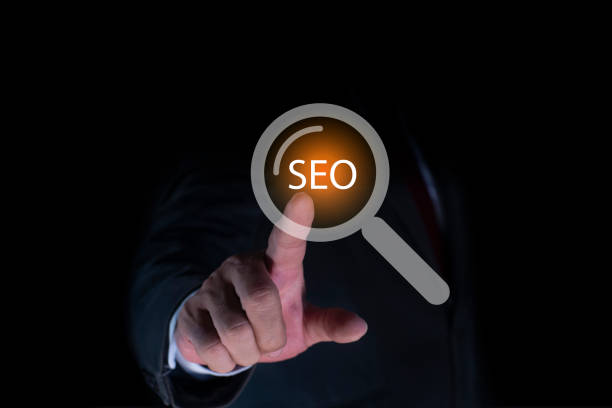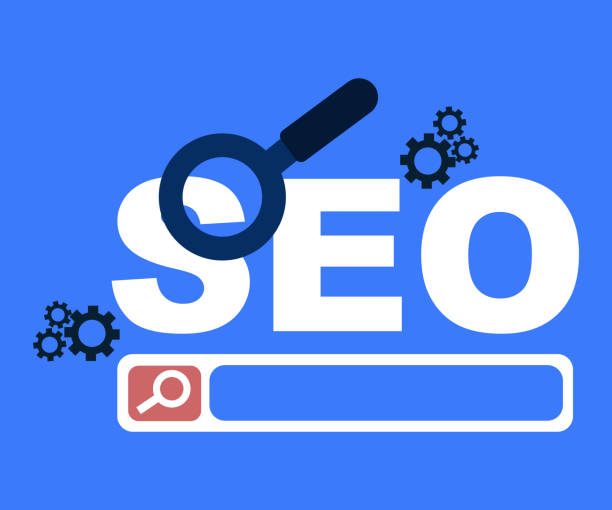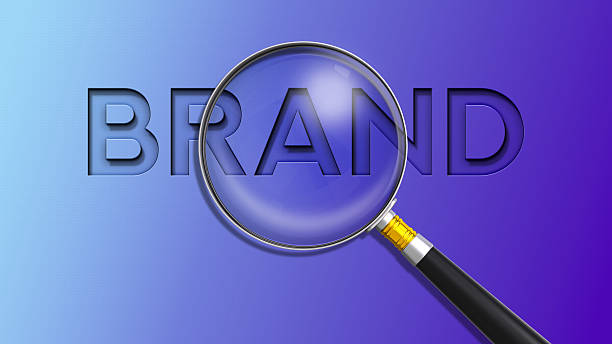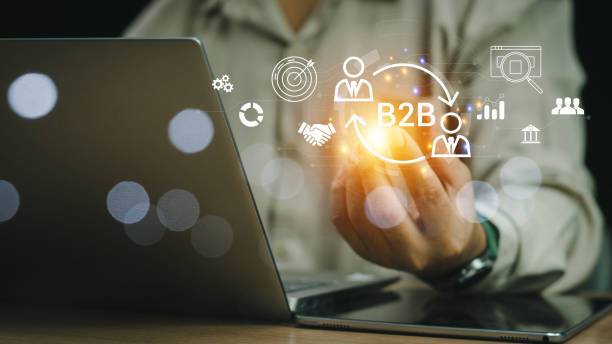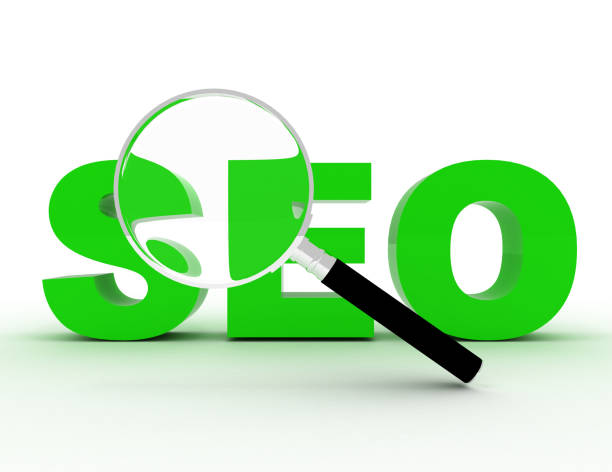Introduction to On-Page SEO and Its Importance
In today’s digital world, your website being visible among a multitude of competitors is not an option, but a necessity. This is where the concept of #On_Page_SEO or on-page optimization comes into play.
On-page SEO refers to a set of activities performed within your website and on its content to optimize it for search engines and users.
Its primary goal is to help search engines better understand your page content and, as a result, achieve higher rankings in search results. This optimization includes elements such as keywords, URL structure, meta descriptions, and heading structure.
A deep understanding of how On-page SEO works can make a big difference in your website’s organic traffic.
Without sufficient attention to this aspect of optimization, even the best content may never reach its target audience.
The goal of on-page SEO is to create a flawless user experience while sending clear signals to search bots. This is a comprehensive explanation of why and how to start optimizing your website.
The importance of this part of SEO lies in its ability to accurately direct targeted traffic to your website.
The better search engines understand your pages, the higher your chances of appearing in relevant searches.
This means increased visitors, increased conversion rates, and ultimately, the growth of your online business.
Are you concerned about your e-commerce site’s low conversion rate and not achieving your desired sales?
Rasaweb is your specialized solution for a successful e-commerce website.
✅ Significant increase in conversion rates and sales
✅ Professional and user-friendly design to attract customer satisfaction
⚡ Ready for an online sales transformation? Get a free consultation!
Key Elements of On-Page SEO: Titles and Meta Descriptions
One of the first steps in optimizing #On_Page_SEO is to pay attention to core elements such as #SEO_Title and #Meta_Description. The SEO title (Title Tag) is the most important element that search engines and users look at to understand your page’s topic.
This title should contain the page’s main keywords, be attractive enough for user clicks, and have an appropriate length (usually between 50 to 60 characters) to be fully displayed in search results.
Using target keywords at the beginning of the title can significantly help improve rankings.
On the other hand, the Meta Description, although not directly affecting ranking, plays a vital role in attracting users and increasing the click-through rate (CTR).
This short text (usually 150 to 160 characters) should provide a summary of the page’s content, encourage the user to click, and include relevant keywords.
Writing unique meta descriptions for each page and avoiding repetition are key points in this area.
Remember that an excellent title and meta description can make the difference between your page being seen or overlooked. This is an instructive and crucial step in the optimization process that should not be ignored, as it is the first thing a user sees in search results and influences their decision to visit your site.
Optimizing Content to Attract Users and Search Engines
Content is king, and optimizing it for #On_Page_SEO is the cornerstone of success in search engine rankings. This specialized section examines how to create high-quality content that is both understandable to search engines and attractive to users.
#Quality_Content means comprehensive, accurate, unique, and practical content that answers users’ questions and meets their needs.
Natural use of #Keywords throughout the text, without overuse (known as Keyword Stuffing), is essential.
Content structure is also highly important; using appropriate headings (H1, H2, H3, etc.) helps search engines understand the structure and main topics of your content.
Each page should have only one H1, which contains the primary keyword.
Furthermore, content readability is crucial for users.
Short sentences, small paragraphs, and the use of lists and bullet points can improve user experience.
Longer and more comprehensive content (usually over 1000 words) that fully covers a topic is often preferred by Google, as it indicates depth and expertise.
| Element | Description |
|---|---|
| Content Quality | Comprehensive, accurate, unique, and responsive content addressing user needs. |
| Keyword Usage | Natural integration of primary keywords and synonyms in the text. |
| Heading Structure (H1-H6) | Hierarchical and correct usage for improved readability and search engine understanding. |
| Content Readability | Short sentences and paragraphs, use of lists. |
| Content Length | Generally, longer and more in-depth content (over 1000 words) is preferred. |
| User Intent | Ensuring that the content fully addresses the user’s search intent. |
Click here to preview your posts with PRO themes ››
Furthermore, using visual content like images and videos can increase the appeal of your content and boost user dwell time on the page, which is itself a positive signal for SEO.
This analytical approach to content forms the core of successful on-page SEO.
Technical Aspects of On-Page SEO: URL Structure and Internal Linking
Beyond content, the technical aspects of on-page SEO also play a vital role in your website’s success. #URL_Structure is one such aspect.
Short, descriptive URLs containing keywords are more understandable for both users and search engines.
Avoiding complex characters and using hyphens (-) instead of underscores (_) to separate words is recommended.
URLs should reflect your site’s structure and have a hierarchical logic.
Another crucial guide for improving on-page SEO is #Internal_Linking.
Internal links are links that point from one page on your website to another page within the same website.
These links help search engines discover your pages and understand the thematic connection between them.
Additionally, proper internal linking can distribute “Link Equity” throughout your website.
Using descriptive and keyword-relevant Anchor Texts, instead of generic phrases like “click here,” is very important.
Good internal linking strengthens your site’s structure and helps users navigate your site easily, both of which are beneficial for SEO rankings. These aspects, though perhaps less visible, have a profound impact on how your site is crawled and indexed by search bots.
How much does losing business leads due to an unprofessional website cost you? Solve this problem forever with professional corporate website design by Rasaweb!
✅ Increase credibility and trust among potential customers
✅ Easier attraction of new business leads
⚡ Get a free consultation right now!
Image Optimization and User Experience in SEO
Images play a role beyond mere aesthetics on a website, and their optimization is considered a crucial part of on-page SEO. #Image_Optimization involves compressing file size without losing quality, using appropriate formats (like WebP for faster speed), and most importantly, correctly completing the Alt Text.
Alt text provides a brief and accurate description of the image content, helping search engines and visually impaired users understand the image.
Including relevant keywords in Alt Text, provided it’s natural, can assist with image SEO.
In addition to images, #User_Experience (UX) is also closely linked to on-page SEO.
Google increasingly focuses on user experience factors such as site loading speed, mobile responsiveness, and user interaction with the page. A site that loads quickly, displays well on various devices, and is easy for users to navigate not only has a lower Bounce Rate but also sends more positive signals to search engines.
This is practical guidance showing how technical and visual improvements can directly impact your rankings.
Engaging and visual content with high dwell time are among the factors Google highly considers for ranking websites.
The Role of E-A-T and Content Quality in Site Authority
Understanding the concept of E-A-T is essential for success in on-page SEO, especially in sensitive areas like health or finance. E-A-T stands for Expertise, Authoritativeness, and Trustworthiness, and it is used by Google as an important criterion for evaluating the quality and reliability of content and websites.
#EAT is not directly a ranking factor, but it helps Google determine whether a page can provide accurate and useful information to its users.
To improve E-A-T, you must ensure that your content is produced by experts or knowledgeable individuals in the relevant field.
This includes showcasing authors’ credentials, experiences, and expertise.
#Content_Quality is directly related to E-A-T; content that is accurate, complete, up-to-date, and error-free increases your website’s authority.
Additionally, ensuring website security (HTTPS), transparency regarding privacy policies and contact information, and gathering positive user reviews and feedback can help increase #Site_Authority.
This is an analytical approach to understanding Google’s expectations for website quality and shows that simply stuffing pages with keywords is not enough. Modern on-page SEO goes beyond simple techniques and emphasizes the real credibility and value you create for the user.
On-Page SEO Analysis and Monitoring Tools
To measure your progress in on-page SEO and identify potential issues, using #SEO_Tools is essential. These tools provide vital data that can aid informed optimization decisions.
#Google_Analytics (Google Analytics) provides comprehensive information about user behavior on your site, including traffic, dwell time, bounce rate, and navigation paths.
This data helps you understand how users interact with your content and which pages need improvement.
#Google_Search_Console (Google Search Console) is also a crucial tool for monitoring your site’s performance in search results.
This tool shows you which keywords your site ranks for, which pages have indexing issues, and which errors need to be fixed.
In addition to free Google tools, more advanced paid tools like Ahrefs and SEMrush offer deeper insights into backlinks, keyword research, competitor analysis, and comprehensive SEO audits.
SEO plugins like Yoast SEO or Rank Math are also excellent tools for WordPress websites to manage on-page SEO, including titles, meta descriptions, and sitemaps.
Click here to preview your posts with PRO themes ››
| Tool Name | Main Use |
|---|---|
| Google Analytics | User behavior analysis, site traffic, conversion rate. |
| Google Search Console | Performance monitoring in search, crawl errors, indexing. |
| Ahrefs/SEMrush | Keyword research, competitor analysis, backlinks, comprehensive SEO audit. |
| Yoast SEO/Rank Math (WordPress plugins) | Managing titles, meta descriptions, sitemaps, and on-page SEO analysis. |
| PageSpeed Insights | Analyzing and improving page loading speed. |
Regular use of these tools provides a specialized approach to maintaining and improving your website’s ranking, helping you always stay informed about your on-page SEO status.
Common On-Page SEO Mistakes and How to Avoid Them
On the path to optimizing on-page SEO, there are some #Common_Mistakes that can nullify your efforts. One of the most common mistakes is #keyword_stuffing, or over-filling content with keywords.
This practice is not only penalized by search engines but also severely degrades user experience.
While this method might have been effective in the past, today’s search engines are much smarter and focus on content quality and semantic relevance rather than keyword density.
Another mistake is #Duplicate_Content.
Publishing identical or very similar content on different pages of your site can confuse search engines and harm your rankings.
Always ensure your content is unique and valuable. Neglecting site speed and failing to optimize for mobile are also egregious errors.
In today’s world, loading speed and correct mobile display are critical ranking factors.
Other mistakes include poor internal linking or not using it at all, which can disrupt the flow of link equity within your site.
Disregarding user intent and producing content that doesn’t answer their needs are also issues that can lead to high bounce rates and negative signals for SEO.
This section, presented as thought-provoking content and guidance, helps you recognize and avoid these pitfalls, smoothing your SEO journey.
How much does losing business leads due to an unprofessional website cost you? Solve this problem forever with professional corporate website design by Rasaweb!
✅ Increase credibility and trust among potential customers
✅ Easier attraction of new business leads
⚡ Get a free consultation right now!
Future Trends in On-Page SEO and Preparing for Them
The world of on-page SEO is constantly evolving, and to maintain an edge, one must be aware of future trends. One of the most important trends is the increasing importance of #Voice_SEO.
With the widespread use of voice assistants like Siri, Alexa, and Google Assistant, optimizing for voice searches has become increasingly important.
This means focusing on longer keywords and conversational language in content, as people use more complete sentences when speaking.
#Artificial_Intelligence will also play a significant role in the future of SEO.
Google’s AI-based algorithms like RankBrain and BERT help search engines better understand user intent and content meaning.
This means your content should be optimized not only for specific keywords but also for broader concepts and answers to more complex questions.
Semantic SEO (Semantic SEO) and focusing on User Intent, are other key trends, meaning content should cover not just specific keywords, but generally related topics and concepts to be more understandable for search engines.
This analytical and news-based analysis prepares you for the challenges ahead and ensures your on-page SEO strategies are forward-looking.
Conclusion and Practical Steps for Mastering On-Page SEO
As you’ve learned in this comprehensive article, on-page SEO is a multifaceted strategy that requires careful attention to detail and a deep understanding of how search engines work and user behavior. From optimizing titles and meta descriptions to producing quality content and proper structuring, every aspect of on-page SEO plays a crucial role in your online success.
#Practical_Steps to master this field include: conducting comprehensive keyword research, producing valuable content that addresses user needs, optimizing On-Page elements such as titles, headings, and image Alt Text, improving URL structure and internal linking strategy, increasing site speed and ensuring mobile responsiveness, and regularly using analytical tools for continuous monitoring and improvement.
Remember that SEO is an ongoing process and, with changes in search engine algorithms and user needs, requires #Continuous_Improvement and adaptation of strategies. By implementing these guidelines and investing in a strong #SEO_Strategy, you can significantly improve your website’s position in search results and attract more organic and targeted traffic.
This path may be long, but its results will be a valuable reward for your efforts.
Click here to preview your posts with PRO themes ››
Frequently Asked Questions
| Question | Answer |
|---|---|
| What is On-page SEO? | On-page SEO refers to a set of actions performed within a website and on its page content to achieve a better ranking in search results. |
| Why is On-page SEO important for a website? | On-page SEO helps search engines better understand your page content and assess its importance. It also provides a better user experience for visitors. |
| What are the most important On-page SEO factors? | Key factors include keyword optimization, content quality, Title Tag, Meta Description, URL structure, Heading Tags (H1-H6), internal linking, and image optimization. |
| What role does the Title Tag play in On-page SEO? | The Title Tag is one of the most important on-page SEO factors that displays your page title in search results and browser tabs. It should include the main keyword and be engaging. |
| What is the importance of Meta Description in On-page SEO? | The Meta Description provides a summary of the page’s content. Although it does not directly affect ranking, it can increase the click-through rate (CTR) by encouraging users to click. |
| How are keywords used in On-page SEO? | Keywords are phrases that users use to search for information on search engines. Appropriate and natural use of them in content helps the search engine identify the page’s topic. |
| What is internal linking and what is its benefit in On-page SEO? | Internal linking means creating links between different pages of a website. This helps distribute page authority, aids search bot crawling, and improves user experience. |
| How does image optimization affect On-page SEO? | Image optimization includes compressing file size, using appropriate Alt tags, and properly naming files. This improves page loading speed and helps search engines understand image content. |
| What does high-quality content mean in On-page SEO? | High-quality content means content that is comprehensive, accurate, unique, up-to-date, user-friendly, and meets users’ needs. |
| What role does URL structure play in On-page SEO? | Readable, short URLs containing the main keyword help search engines and users better understand the page content and improve user experience. |
And other services of Rasaweb Advertising Agency in the field of advertising
Smart Sales Automation: Professional optimization to increase click-through rates using key page optimization.
Smart UI/UX: A fast and efficient solution for customer acquisition, focusing on attractive user interface design.
Smart Advertorials: A fast and efficient solution to increase website traffic, focusing on custom programming.
Smart Advertising Campaign: Designed for businesses seeking to improve SEO ranking through intelligent data analysis.
Smart Google Ads: A dedicated service for growth in website traffic based on the use of real data.
And over hundreds of other services in the field of internet advertising, advertising consultation, and organizational solutions.
Internet Advertising | Advertising Strategy | Advertorial
Resources
Comprehensive Guide to On-Page SEO
On-Page SEO Articles
What is On-Page SEO?
The Key to SEO Success
? For your business to leap forward in the digital world and reach the pinnacles of success, Rasaweb Afarin Digital Marketing Agency, specializing in user-friendly website design and innovative online strategies, is your comprehensive solution.
📍 Tehran, Mirdamad Street, next to Bank Markazi, Kazeroon Janubi Alley, Ramin Alley, No. 6


